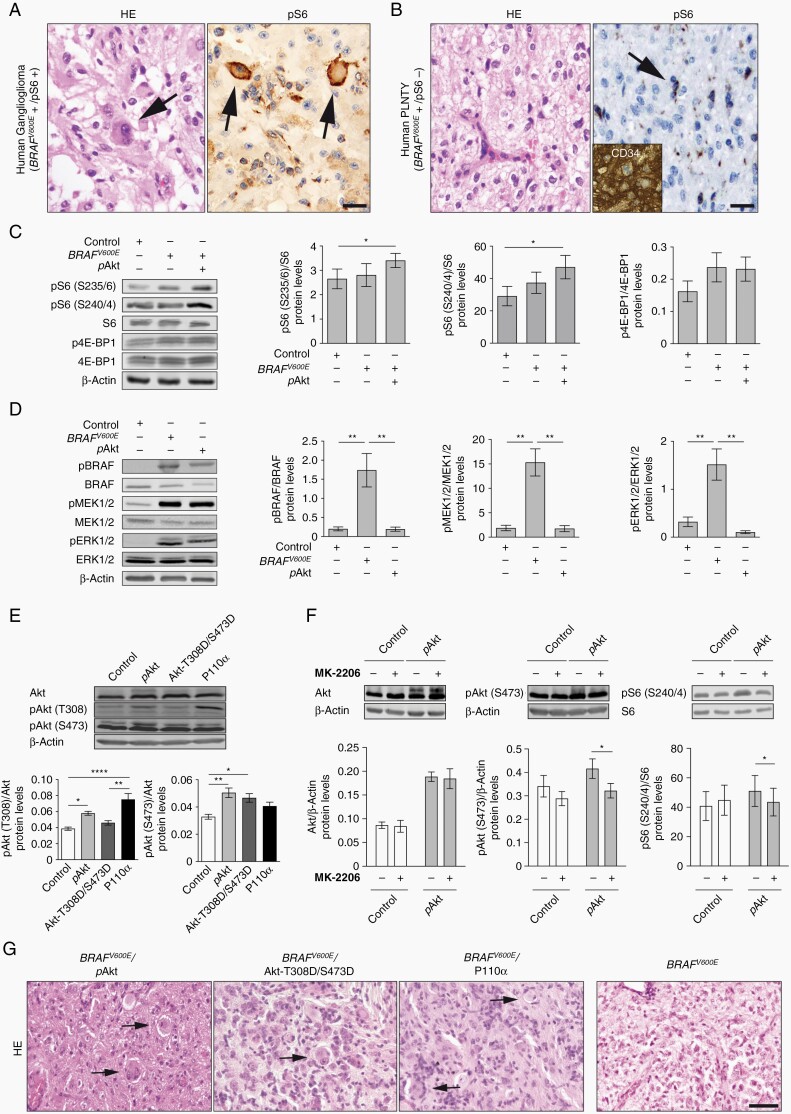Fig. 1.
mTOR-pathway activation in human GGs and in-vitro assessment of pAkt potential to activate the mTOR-pathway. (A) Representative human GG harboring dysplastic neurons positive for pS6 (arrows) vs (B) PLNTY contains prominent monomorphic oligoid cells, negative for pS6 (arrow; scale bar, 100 µm) and positive for CD34 (inset; scale bar, 50 µm). (C) Representative immunoblots and quantification of pS6 (S235/6)/S6, pS6 (S240/4)/S6, and p4E-BP1/4E-BP1 protein levels after transfection of NS20Y cells with Control, BRAFV600E, and BRAFV600E/pAkt plasmids (n = 4). (D) Immunoblots and quantification of pBRAF/BRAF, pERK/ERK, and pMEK1/2/MEK1/2 for Control, BRAFV600E, and pAkt conditions (n = 5). (E) Representative immunoblots of Akt, Akt (T308), and Akt (S473) from Control-, pAkt-, Akt-T308D/S473D-, and P110α-transfected NS20Y protein lysates and quantification of pAkt (T308)/Akt and pAkt (S473)/Akt protein levels (n = 5). One-way ANOVA followed by Tukey’s multiple comparison test. (F) Treatment with MK-2206 after transfection with Control or pAkt and corresponding quantification of Akt, pAkt (S473), and pS6 (S240/4) protein levels in NS20Y cells (n = 4). Two-way ANOVA followed by Sidak’s multiple comparison test. An antibody against β-actin was used as loading control in all cases. (G) H&E-stained sections of BRAFV600E/pAkt, BRAFV600E/Akt-T308D/S473D, BRAFV600E/P110α (2-hit)-, and BRAFV600E (1-hit)-IUE brains (>P40). Arrows point to dysmorphic neurons in BRAFV600E/pAkt model. Scale bar, 25 µm. Abbreviations: GG, ganglioglioma; H&E, hematoxylin and eosin; IUE, in utero electroporation; PLNTY, polymorphous low-grade neuroepithelial tumors of the young.

